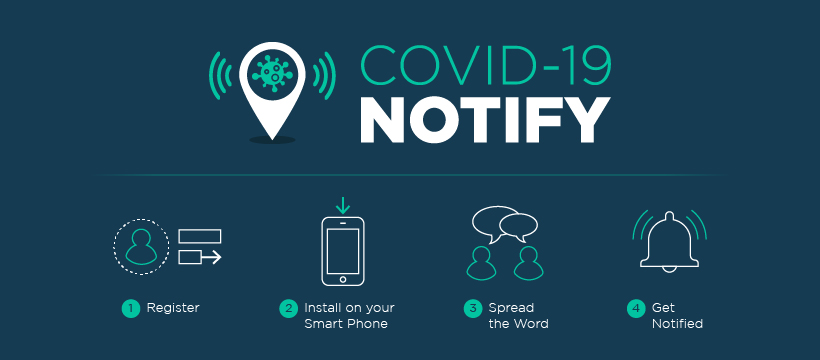How It Works

How do you know if you've been in contact with someone who’s infected with COVID-19, or let people know that you've been infected?
While some of us are self isolating, truckers, first responders, grocery store personnel, and millions of others aren't able to just sit at home. And once we get out of isolation, we need to be able to rapidly conduct contact tracing to stop additional outbreaks from exploding.
If somebody does not know they’ve been exposed, they could have COVID-19 and be spreading it around infecting people before they ever have symptoms. Our goal is to slow the spread by letting people know they may have come into contact with somebody and contracted it, allowing them to take proactive measures to stop it from spreading further.
We have been developing and testing a smart phone App that has the capability of alerting you if you have potentially been exposed to COVID-19. We know this generates some questions and here we will explain how it all works. To work, we need as many people as possible to use the App so there is enough information to make it effective. This is not and cannot be 100% effective, but it certainly has the potential to reduce the spread of COVID-19.
Here is how the App works in detail:
- You install the App on your iPhone or Android smartphone.
- The App will ask for your postal code or area code and assign you a unique ID. This is the only information we initially need, we don’t need to know who you are, just the area you live in. You can optionally provide more information which helps even more, but we are being sensitive to your privacy.
- The App will store your traveling information for the last three weeks on your phone so that you have a record of where you’ve been. It important that we stress your location information is not being shared with us, it is only being stored on your device unless you submit it to us in a later step.
- You will be able to set up blind spots in your location information being stored, such as where you live so that information is not being recorded.
- If anybody using the App becomes sick, they can self-report their illness as either having symptoms of COVID-19 or having a confirmed case of COVID-19. A warning will be displayed about filing a false claim. While we do not store your personal information, we do store enough information that law enforcement would be able to seek a warrant to identify you should you file a false report. False reports will be taken extremely seriously with a zero tolerance policy and we will fully cooperate with law enforcement and legal orders. Our App will include counter-measures to fraudulent use as well.
- Your location information is only submitted to us when you self-report and does not include any blind spots you’ve set. You will be able to review your location history before it is submitted.
- NOTE: As of April, Google and Apple released newer technology originally called Contact-Tracing, but was renamed to Exposure Notification on April 23rd. We have been keeping updated on this new technology specification and are able to incorporate it into our App. This means we could use location history or/and exposure notification. Location history would be the most useful and preventative in nature, where-as Exposure Notification is limited to only immediate close contact for at least 5 minutes. This is not as beneficial in a high populaton density area where people may come into contact and pass hundreds of people in just minutes.
- When we receive the location information for somebody self-reporting, their location history will be used to determine what regions they have been in. Since we only know the regions the App exists in, we will notify all Apps in those regions about the report.
-
All Apps receiving a notice about a self-report will scan that users submitted location information to compare it to the location history stored in their App.
- If the user has been in the same place at the same time, they will receive a notice about possible exposure.
- If the user has been at the same location within 3 hours, they will receive a notice about possible airborne or surface contamination.
- If a user has been to a location within 3 days after they will receive a notice about possible surface contamination exposure.
- This allows the user to take precaution knowing they have potentially been exposed, such as staying away from other people, especially if they have compromised immune systems.
- This process is the same for you. If you have the App installed and become sick, you can self-report and have your location information, except the locations you have excluded, submitted to our system so others can check if they could have been infected by you. Remember, they will not receive personal information about you, only the locations you've been to that are not excluded and that you have reviewed and authorized to be shared.